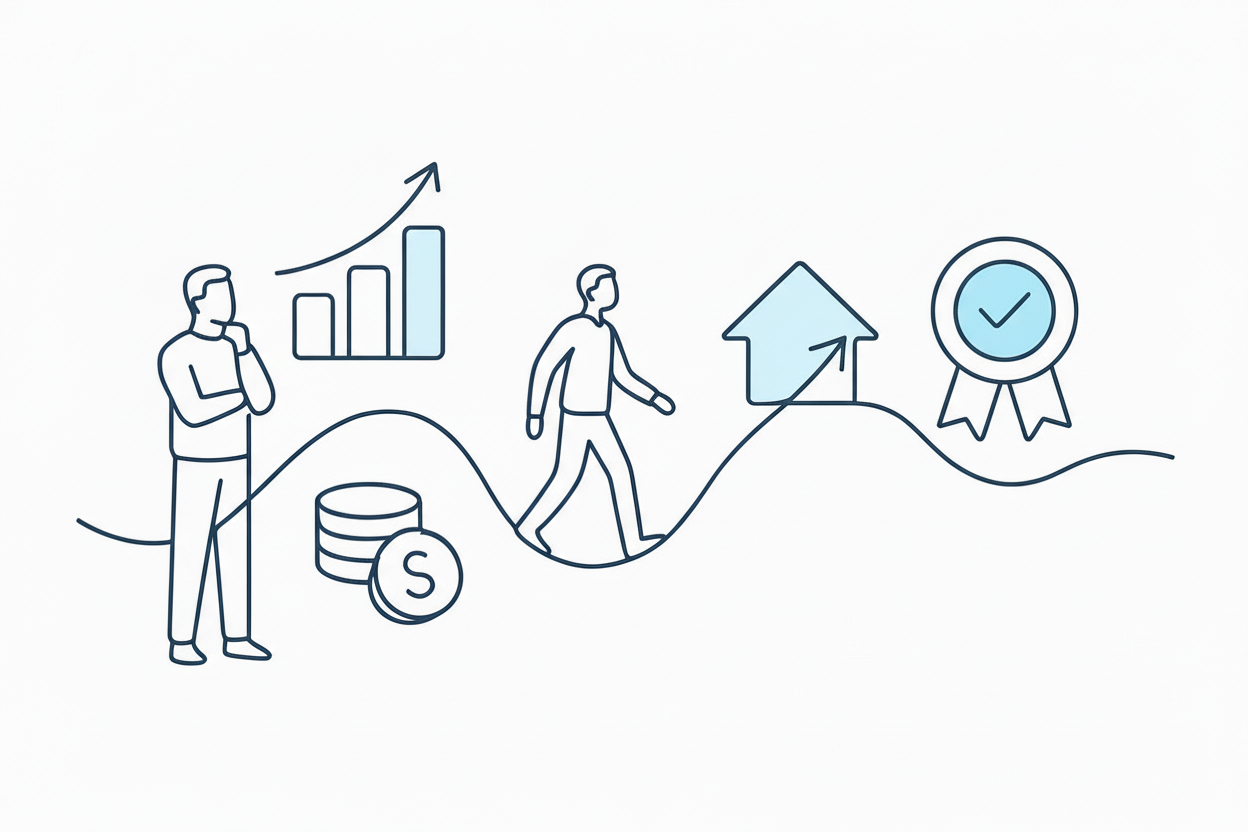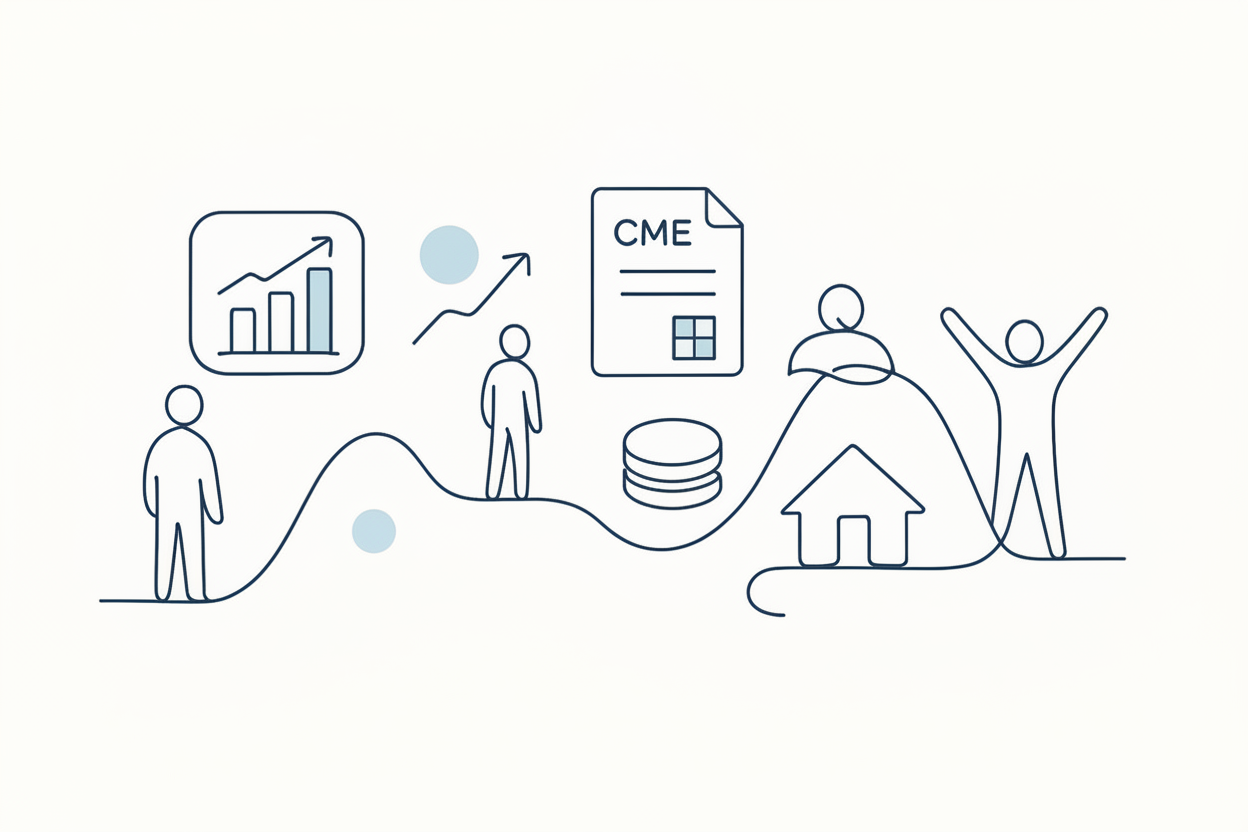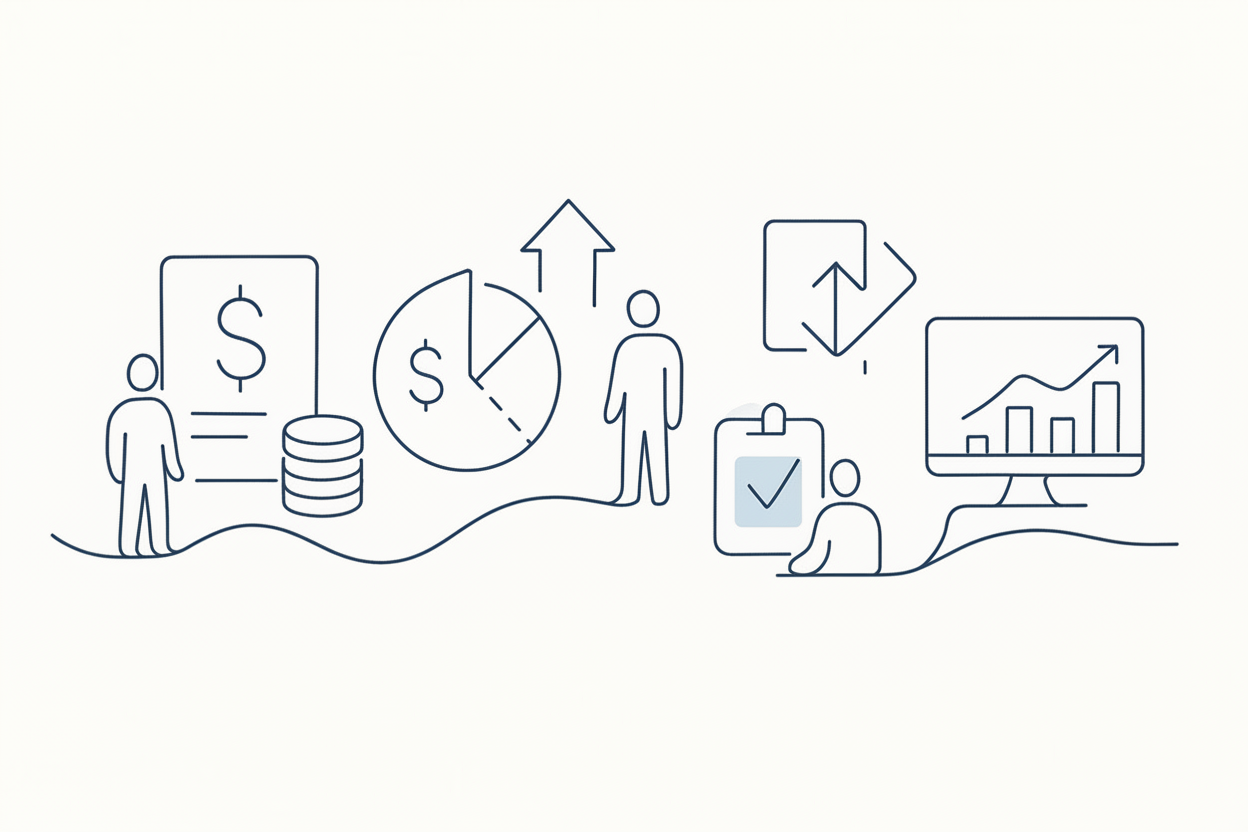Running Automated Trading as a Serious Business

Approaching automated trading like a business begins with a clear plan that articulates your objectives and defines what success looks like.
Automated Trading as a Business
It's time to take it seriously. It's time to implement a plan and build a system that executes that plan consistently. Maybe you've had some success trading already, maybe you're just getting started. In either case, you'll want to read through these steps to truly think through how to scale and build your "business" of automated trading.
How to Form Your Business
Consider this exercise of forming an entity and treat the process as if you were trading someone else's capital:
- Formulate a Business Plan: Clearly define your investment strategy, expected return profiles, and risk management techniques.
- Audit and Tax Planning: Start to prepare how you're going to handle taxes. And how taxes will play a role in your returns year after year. This process will also help you understand the tax implications of your approach and ensure that your strategy is worth it after accounting for taxes.
- Risk Management Framework: Develop a robust risk management framework that outlines how you will manage investment risks, operational risks, and counterparty risks. Remember, that as the operator of your trading strategies, you represent operator risk that you need to account for. Your own choices and decisions can lead to vastly different outcomes from your original plan, particularly if you meddle with your strategies too much. Are you prepared to create a process and system that keeps your own choices in check?
- Operational Infrastructure: Set up your trading systems, IT infrastructure, and back-office processes. Where will your trading signals come from? Is the cost of data accounted for? How about the cost of TradersPost to automate your trading strategy?
Elect a Board of Directors

Electing a Board of Directors is a strategic step to ensure accountability in your trading practice. The temptation to deviate from a set strategy is high in trading, where just a few clicks can significantly alter your course. To counteract this, establishing a "board" of trusted advisors is invaluable. This board could comprise friends, family, or fellow traders you’ve met online—individuals who understand your goals and the discipline required in trading. Arrange regular meetings with this group to discuss your trading strategies and results. The role of your board is not just to provide oversight but also to offer constructive feedback, helping you to stay aligned with your long-term objectives and resist impulsive decisions.
During these meetings, present a clear and honest update on your trading activities, including profits, losses, and deviations from the planned strategy. This transparency enables your board to provide effective guidance and support. Their external perspective can be crucial in challenging your assumptions and pushing you towards more disciplined trading practices. Additionally, they can assist in evaluating the effectiveness of your strategy over time, suggesting adjustments as market conditions change, and ensuring that your trading decisions remain data-driven and aligned with your overall financial goals. Regular interactions with your board will cultivate a more structured approach to trading, turning it into a systematic business operation rather than a speculative endeavor.
Developing an Investment Thesis
You can't really open a business without having a specific problem you're solving or, in the case of automated trading strategies, some kind of market thesis your strategy is built from. This step is critical as it will force you to have a clear, well-defined viewpoint on what part of the market your looking to profit from and why you expect this pattern to recur. Since many patterns in the market rarely recur, you'll need to have rigorous data to back up your thesis, including back tests, walk-forward tests, and analysis on your trading approach.
The vast majority of trading strategies out there fit into two categories: Trend-following and mean-reverting. What category does your strategy fit into? Does it produce roughly the same performance as other well-known strategies in those categories? Will it outperform and why?
Next, set specific, measurable goals that you aim to achieve within the next 3-5 years, ensuring these targets align with your overall financial and strategic vision. Outline how you'll measure success, whether through profitability, reduced drawdowns, or consistent performance against benchmarks. Remember to be realistic. Goals like "Generate 1000% returns" or "10x my account" are not well defined and fairly unrealistic without considerable risk and leverage.
Develop a comprehensive risk management strategy that details how you will handle potential losses, including predetermined drawdown limits and criteria for making adjustments to your trading algorithms. Incorporate a system for regular review and optimization of your trading strategies to respond to changing market conditions effectively. Managing the process also means managing yourself: establish routines and disciplines that prevent emotional decision-making and ensure you stick to your trading plan. This structured approach is essential not only for achieving your goals but also for scaling your operations sustainably and professionally over time.
SMART Goals
Consider using the SMART framework when setting your goals, which is an acronym for Specific, Measurable, Achievable, Relevant, and Time-bound).
- Is your goal specific? Does it clearly define how many trades, in what markets, with what capital is required, and what kind of strategy it is?
- Do you have measurements in place? Are you measuring the PnL alone, or are you also measuring risk analytics like Sharpe, Max Drawdown, Omega, and how transaction costs play a role?
- Is your strategy built on a dream of making all the money in the world, or have you determined that the approach is robust, reliable and an achievable target can be reached?
- Are your goals relevant to the main objectives? Or are they simply aspirational? Many people get wrapped up in the "when lambo" culture and set goals associated with the lifestyle they are trying to achieve. Are you goals relevant to the strategy and thesis you have developed?
- And finally, are you goals time-bound? Do you have a specific timeline defined where your results will be measured and realized?
Setting Up Your Automated Trading Infrastructure
To establish a robust automated trading business, it's essential to build a solid infrastructure that supports every aspect of your trading activities. This setup involves multiple layers of technology and software, each serving a critical function from signal generation to trade execution and performance analysis.
- Signal Generation Tools: At the core of automated trading are the algorithms and tools that generate trading signals. This is where platforms like TradingView and TrendSpider come into play. They provide powerful technical analysis tools and enable traders to create custom indicators and strategies directly on their charts. For those who prefer more hands-on programming, languages like Python can be employed to develop complex algorithms that can analyze large datasets much more efficiently than manual methods.
- Trade Execution System: Once signals are generated, the next step is executing these trades in the market efficiently. This is where TradersPost plays a crucial role. It acts as a bridge between your signal generation tools and your brokerage account, enabling automated trading systems to execute trades based on the signals received. TradersPost supports integration with various platforms and asset classes and provides a reliable and swift mechanism to ensure that your trading strategies are carried out without delay.
- Data Subscriptions: Accurate and timely data is crucial for effective trading decisions. Subscribing to reliable data feeds is necessary to fuel your analytical tools and algorithms. This includes not only price data but also news feeds, economic indicators, and alternative data sources that can provide a competitive edge.
- Analysis Software: Beyond execution, traders need to analyze the performance of their trades to refine strategies and improve returns. Software that provides detailed analysis and reporting capabilities is essential. This could range from backtesting tools that allow you to test strategies against historical data to more advanced analytical platforms that offer insights into the risk and return profiles of your trades.
- Hardware and Networking: Don’t underestimate the importance of physical infrastructure. Powerful computers and fast, reliable internet connections are a must to handle high-frequency trading and complex calculations without lag. Ensuring that your hardware can handle your trading volume and that your internet connection is fail-safe (possibly with backups) is crucial.
- Security Measures: Finally, robust security measures are critical to protect your trading data and operations. This includes secure storage of data, encryption of data in transit, and perhaps even dedicated cybersecurity software to guard against unauthorized access.
Setting up this infrastructure requires upfront investment and ongoing maintenance, but the payoff is a highly efficient trading operation that minimizes slippage and maximizes potential returns. By integrating these components seamlessly, you ensure that your trading business operates smoothly, adapts quickly to new information, and scales effectively as your strategies evolve.
Risk Management: Key to Sustainable Trading

Risk management is the cornerstone of sustainable trading, ensuring that you preserve capital and continue trading even through challenging market periods. One practical approach to implementing effective risk management is through the use of TradingView's Pine Script, which allows traders to encode specific risk parameters directly into their trading strategies. For instance, you can establish max drawdown limits, max consecutive loss days, max number of orders, max intraday loss, max position size limits, and stop-loss orders within your script, automatically dictating how trades are executed based on these predefined risk thresholds. This automation helps prevent emotional trading decisions and maintains discipline in following the risk management rules you’ve set. Additionally, Pine Script can be utilized to manage individual trade sizes and diversification strategies to spread risk across various instruments, further safeguarding your trading capital.
Beyond individual trade management, it's crucial to monitor your overall account performance to ensure your trading strategy aligns with your financial goals. This is where platforms like your brokerage account and TradersPost come into play. Your broker provides detailed reports on your account's performance, including profit and loss statements, which are essential for evaluating the effectiveness of your risk management strategies. TradersPost enhances this oversight by offering tools that aggregate performance data from multiple sources, giving you a comprehensive view of your trading activity. This integrated approach allows you to adjust your strategies promptly based on the holistic performance of your trading account, ensuring you stay on track towards your trading objectives and adapt to changing market dynamics efficiently. By combining these tools, you create a robust framework for managing both the micro and macro aspects of trading risk, essential for long-term success in the markets.
Monitoring Performance and Making Adjustments
Monitoring the performance of your trading strategy is crucial to ensure that it performs as expected in live markets, relative to its historical backtest and walk-forward testing results. Regularly comparing current performance with these pre-launch tests helps in identifying any deviations or unexpected outliers in the strategy's behavior. Such monitoring should be meticulous, involving daily or weekly reviews of trade logs and performance metrics. Look for patterns that diverge from the expected outcomes, such as higher drawdowns or reduced profitability, which could signal that the strategy may not be interacting with current market conditions as predicted. This thorough analysis helps in pinpointing inefficiencies or needed enhancements in the strategy.
When adjustments are deemed necessary, it's important to document every change made, including the rationale behind each decision and the specific date it was implemented. This documentation is vital for tracking the impacts of modifications and understanding the long-term evolution of your strategy. Moreover, encountering losses is a normal part of trading; not all deviations will require changes to your strategy, as some outliers may simply be statistical anomalies. Another key method for managing risk is diversification—not only across different markets or instruments but also by implementing multiple trading strategies. By reducing the exposure to any single strategy and spreading your capital among various approaches, you potentially lower overall risk and increase the resilience of your trading portfolio. This strategic diversification ensures more stable performance across varying market conditions and is a fundamental aspect of sophisticated trading operations.
Scaling and Diversifying Your Trading Operations
Scaling and diversifying your automated trading operations are essential steps towards building a more robust and resilient trading business. To scale effectively, begin by ensuring that your existing strategies are stable and consistently profitable over various market conditions. This foundation allows you to incrementally increase trade sizes or frequency, thereby enhancing your market exposure without disproportionately increasing your risk. Additionally, consider leveraging advanced technologies and infrastructure improvements, such as faster data feeds (which typically require higher paid plans) and sophisticated risk management software. These investments can handle higher volumes and more complex strategies, facilitating growth. It’s also critical to maintain a scalable backend system, particularly in data management and trade execution, to support increased trading activity without compromising performance.
Diversification, on the other hand, involves spreading your investment across various trading strategies and asset classes to mitigate risk. Start by analyzing different markets that correlate minimally with your current trades, such as different commodities, futures contracts, options, or stock indices. Implementing multiple strategies that respond differently to market events can also reduce volatility in your overall portfolio. For instance, combining trend-following strategies with mean-reversion setups or incorporating strategies that specialize in different time frames and market conditions can provide balance. Regularly reviewing and adjusting your portfolio based on performance metrics and evolving market dynamics ensures that your diversification efforts are effectively reducing risk while striving to maximize returns. This strategic approach not only safeguards against significant losses but also capitalizes on various market opportunities, ensuring long-term growth and stability in your trading business.




